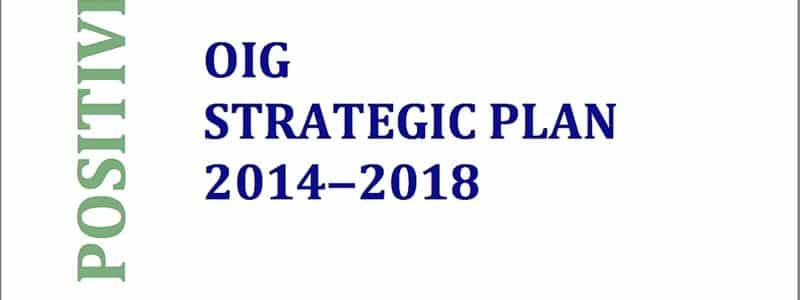Without much fanfare, the OIG, a couple of weeks ago, released its OIG Strategic Plan for 2014-2018. While not as detailed as the annual work plan (remember that the 2014 work plan release date has been pushed back to January), it does outline four major strategic goals which provide an insight into the OIG’s plans for the upcoming four years. Thus, the OIG Strategic Plan is worthy of attention from all you providers out there. Instead of regurgitating the contents of all four goals, let’s simply talk about what you need to do.
OIG Strategic Plan-if it works, don’t break it
The OIG feels strongly that their compliance efforts have produced positive financial results:
- In FY 2012, estimated savings and expected recoveries from misspent funds totaled $15.4 billion (yes, that’s with a “b”).
- The Health Care Fraud and Abuse Control program returned more than $7 for every $1 invested. (A yield which anyone on Wall Street would take.)
- In FY 2012 alone, the OIG excluded 3,131 individuals and entities.
So, it’s no surprise that their number one stated strategic goal is to “Fight Fraud, Waste and Abuse”. Stated key focus areas are Medicare and Medicaid program integrity and waste in HHS programs but it’s apparent that OIG considers their current audit and enforcement approach as successful and the OIG Strategic Plan shows no indication of changing that strategy.
OIG Strategic Plan is out-Time to act!
For most providers out there, reading the OIG Strategic Plan should not elevate the pulse rate or cause the blood pressure to rise. However, it should serve as a reminder that you must be vigilant about your compliance efforts.
For those of you who are new providers or perhaps you simply want a refresher, the OIG has issued a series of compliance program guidance documents for a variety of health care provider types. These will give providers some fundamental direction on the important elements of a compliance program.
An effective compliance program can serve to reduce fines and penalties for billing or other compliance-related shortcomings when whistleblowers emerge or the OIG starts an investigation. Keep in mind that those fines and penalties can be substantial, so in the unfortunate event that it does happen, an effective program can be invaluable. What’s an effective program? Ask yourself these questions:
- Do you have written policies, procedures and standards of conduct?
- Have you designated a compliance officer and appointed a compliance committee?
- Do you have an ongoing and effective compliance training and education program?
- Are you ensuring that you have effective lines of communication within your organization?
- Do you have ongoing internal monitoring and auditing activities?
- Are standards enforced via well known disciplinary guidelines?
- When offenses are detected via auditing/monitoring, does your organization respond promptly with corrective action?
The bottom line is…
The OIG Strategic Plan may have plenty of the “10,000 foot view” items but behind all of that is a clear commitment to maintaining the audit and enforcement efforts that the OIG clearly believes are needed. Further, based on the financial and exclusion results, the OIG feels that their programs have been very effective.
For those providers who have read this blog and have said to themselves, “I’m already doing all that”, I congratulate you and challenge you to continue diligently with your efforts. For those providers who are missing elements or for those new providers, there’s no time like right now to get started with your compliance program. In this day and age of whistleblowers, the best approach is effective, dynamic and ongoing self monitoring.
So far in 2013, there have been eight civil monetary penalty settlements between providers and the US Justice Department and/or US Attorneys across the country. There were 44 civil and criminal penalties assessed in the month of November alone! One of the issues considered by the DOJ in seeking civil monetary penalties is the existence of an effective compliance program. CMP still hurts, financially, but it beats fines, exclusion from the program and jail time any day!
Mom used to say, “an ounce of prevention is worth a pound of cure” and you know what? She was right! It’s simply good policy to conduct internal monitoring and catch yourself doing something wrong (or more optimistically doing it right!) rather than having it come up in an externally initiated health care compliance audit. At the end of the day, it will help you sleep better at night.

